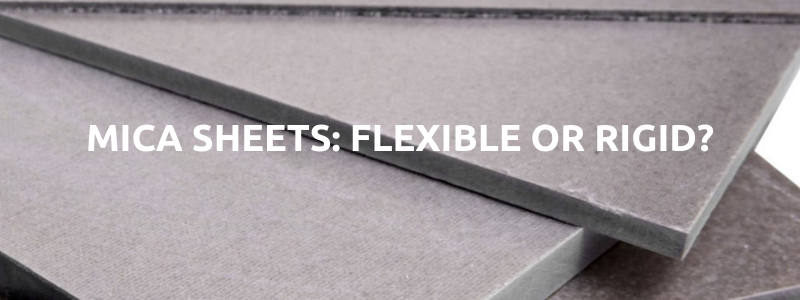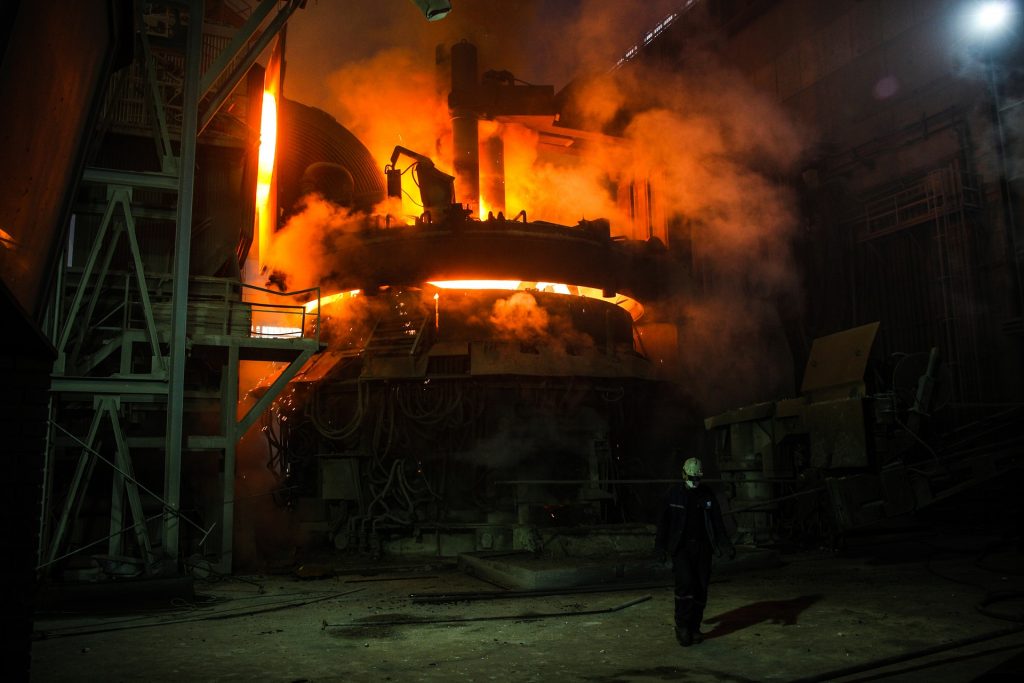
Mica sheets come in flexible or rigid form and are suitable for various critical applications across a diverse range of industries.
Mica is naturally well-suited to production in sheets. In its mineral state, the arrangement of its hexagonal-shaped atoms is in sheet-like. This means mica crystals will break along smooth planes.
Flexible and rigid mica sheets offer exceptional performance in high temperature insulation material, combined with durability and chemical resistance.
Being thin, lightweight and strong, mica sheets are highly versatile. They support key industrial processes and product longevity with rapid heat transfer, cooling of heating elements and other applications.
Mica also has low thermal conductivity, superior dielectric properties and is fire resistant.
Mica Sheets in Flexible Form
Flexible mica sheets can insulate or provide a protective sheathing or covering, or for winding or wrapping.
It can perform as a separator, or as an insulation foil when impregnated with a heat-resistant binder.
Many electrical components, such as capacitors, use mica, due to its dielectric properties.
Muscovite or white mica flexible sheets are used in the heating elements for microwave ovens. When applied as a structure for electrical heating wire flexible, mica sheet can withstand temperatures of up to 900°C.
In this flexible form, muscovite mica is also found in heating elements in consumer appliances such as hairdryers. It is also found in circuit breakers and transformers.
Phlogopite or green mica in flexible sheet form is used in the automotive and aerospace industries, and in thicker grades, it provides highly effective thermal and voltage insulation. In cars, for example, phlogopite mica sheet is used as an asbestos substitute in insulation pads for exhaust pipes.
Flexible Mica Sheets in Furnaces
In the foundry and steel industry, mica sheet extends the life of furnace linings. Mica has excellent slip plane characteristics. This means its structure can accommodate the contraction and expansion of furnace linings in conditions of intense heat.
Consequently, as relining material for furnaces, mica helps reduce the incidence of damage during smelting processes. It also cuts down on the amount of relining a furnace will normally require.
Mica is also a vital element in microporous laminates used in furnaces, providing lining for ladles to increase their volume by heat, and giving tundishes the capability for continuous casting.
In addition to flexible sheets, rigid mica is also widely used in the foundry and steel industry.
Furnace Construction and Rigid Mica
Furnaces are, by the nature of their work, subject to an enormous amount of heat.
Rigid mica sheets offer the right degree of insulation and protection for furnace floors and walls. This helps keep heat levels consistent for processing purposes.
However, there is also a safety element here, as foundry workers can be exposed to dangerous heat levels.
Mica contributes to the prevention of condensation building up on cold working surfaces. And its fire retardant qualities minimise damage from molten metal spillages.
Rigid Mica Sheets for Appliances
Rigid mica sheets provided a highly durable framework for heaters and other consumer appliances.
Typically, many of these products will require a heating element, and rigid mica sheet works as an insulation plate around which the resistance wire is wound.
For familiar appliances such as toasters, hairdryers and heaters, mica enables the safe, rapid convective heat transfer, which is central to how they work.
This highlights the unusual, but highly useful, qualities that mica combines, where it is a good electrical insulator and an effective thermal conductor.
Machined Parts and Shapes
Higher grades of rigid mica sheet are suitable for making machine parts in specialised industrial tooling.
Precision CNC machining provides specialised mica shapes in shorter or larger runs, allowing for high volume manufacturing without losing any precision.
These complex components are then intrinsically well-suited to a range of machining applications, due to mica’s thermal strength and electrical resistance.
Rigid and Flexible Mica Grades
Flexible and rigid mica sheets come in different muscovite and phlogopite mica grades, making them perfect for a broad range of specialised uses, across different sectors.
Rigid sheet mica comes in thicknesses ranging from 0.10mm to 50mm, available in square or rectangular dimensions. At the thicker end of the scale, rigid mica is suitable for custom-shaped insulation.
Machine cutting, punching and pressing using pattern moulds produces flanges, discs and tubes, all quality-tested to ISO 9001 standards or additional customer requirements.
Flexible mica sheets come in a range of standard sizes, with thicknesses between 0.10 and 2mm.
Like rigid mica sheets, they also come in muscovite and phlogopite mica grades.
What a Difference Mica Makes
Due to its sheer versatility in both flexible and rigid sheet form, mica makes a significant impact across many industries, and, as we have shown, in people’s daily lives.

It helps ensure efficient processes and the safety of appliances and offers vital support for various forms of transportation.
As a natural mineral-based solution, it is a safe substitute for asbestos and has proven to be highly effective in its resistance to heat and fire.
Is mica the right fit for your industry? To find out more about mica, please call us on +44 20 8520 2248, email sales@elmelin.com, or complete our online enquiry form. We’ll get back to you as soon as possible.
